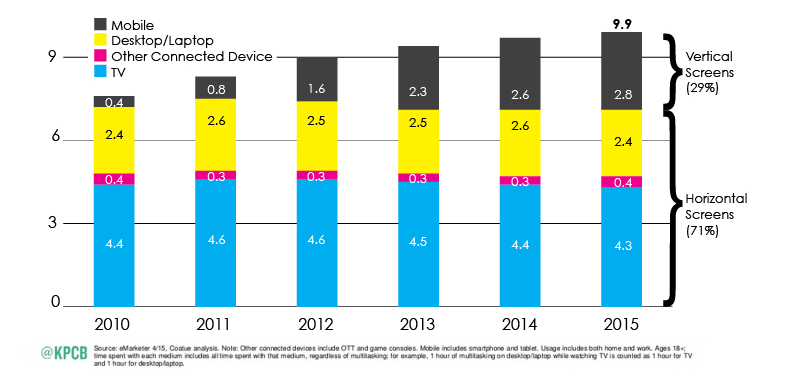How To Create The Right Niche Positioning Strategy
Niche marketing is a targeted marketing plan that focuses on one particular section of the market that has high potential to connect with a product or service. Instead of casting a wide net in mass-media and large-event marketing, niche marketing zeroes in on strategically selected venues and media platforms that have high concentrations of these targeted consumers.
Niche Marketing Strategies (according to marketing-schools.org):
- Word-of-Mouth Campaigns: These campaigns rely more on conversations among consumers than advertising or marketing materials touting the product or service. Brand exposure is low key and subtle, such as sponsorship or giveaways at events or establishments frequented by the niche market. As a result, these campaigns take longer to develop and yield results, but the returns can be extremely high, given that word-of-mouth recommendations generally carry a lot of weight with consumers.
- Trusted-Messenger/Endorsement Campaigns: This strategy hinges on finding a few key influencers in the niche market and enlisting them as spokespersons on behalf of a product or service. An example of this strategy would to hire Wilford Brimley (a longtime actor who is known and loved by many senior citizens) as spokesperson for medical products used frequently by the elderly. The success of these campaigns is highly contingent on the credibility of the spokesperson and the sincerity with which the endorsement is delivered.
- Targeted Collateral Campaigns: This strategy relies on consistent brand exposure to the targeted Niche Market. Just about any radio station that plays a niche type of music (alternative, country & western, or classical, for example) that appeals to a certain audience will employ targeted collateral campaigns. They might distribute collateral and attend concerts by artists played frequently on their station, or advertise in local music/entertainment publications.
Choosing your niche positioning is one of the hardest decisions a business can take, as the dimension of the market you are entering on is very important.
Evaluate your target markets under several criteria. First and foremost, define and size the market. If it’s too broad, it’s not really a niche. If it’s too small, you will plateau very quickly. At the same time, examine the barriers to entry. If anyone can enter the market, it will be very hard to sustain a competitive advantage. Select niches that require an investment, both in time and dollars, because that will keep others out. – stickybranding.com
More that than, the niche chosen should take the account the field you are specialized on and have the best expertize to offer to your consumers. Your ability to service your niche and create sustained competitive advantage will come from your operations versus marketing. When customers seek out a specialist they have high expectations. And your business and services must reflect that reality.
Positioning involves also the followings taken steps: identifying the organisation’s or brands possible competitive advantage, deciding on those that are to be emphasized and implementing the positioning concept.
At the same time, don’t forget about the key factors that make you and your brand/company special and different on the market. They must always be in top of your communication and strategy plan.
Is it illegal or not to regram?
Copyright is always an issue than one posting on social media should be careful of and pay attention at. Due to the fact that Instagram doesn’t include the ability to regram directly within the app, many people have feared that this practice of sharing other people’s content is actually a violation of the Instagram terms of service (TOS).
Moreover, there was a statement published some time ago that was saying that in the Instagram’s terms of service sharing content other than your own was a violation of the platform’s terms. Therefore, regramming was a violation.
But, according to socialmediaexaminer.com, Instagram has updated their TOS to state that you’re responsible for any content you post on Instagram. Sections 7 and 8 speak directly to the types of content you’re responsible for. And one can read the most current version of Instagram’s terms here.
So what are the steps that somebody must take in order to make sure they are not breaking any laws or rules?
- Get permission from the owner to share his / her content. You can do that either by commenting on their post letting them know that you want to share their photo or video with your audience. Then you can ask if you can have their permission to repost it. You can also send the user a Direct Message asking the same thing. Once they give you response in writing, giving you permission to repost the picture, then you’d be allowed to repost the picture. If they don’t respond, don’t use it. Asking is not enough. You need actual consent.
Still according to socialmediaexaminer.com, there are two types of consent: implied and explicit. Implied consent is when users post content with the expectation that it may be regrammed (when the company or the brand has a running campaign with a certain hashtag that wishes it will bring along the wished target and, at the same time, is looking to engage them and make them share the info and get other people involved as well). Explicit consent is when the original content creator gives you direct permission to repost their content on your Instagram account.
2. Get attribution to the original user. Don’t forget to credit the person or the brand you are getting your information from.
3. Use the Repost for the Instagram app. Available for both iphone and android devices, repost for Instagram makes it easy to #Repost your favorite photos and videos on Instagram while giving credit to the original Instagramer. The benefit of using this app is that it will add a watermark to the image with the original post creator’s Instagram username. This makes it clear that the content is regrammed and provides attribution to the original creator.
4. There are now also a variety of platforms and services designed for brands to ask users if they can use their content. According to Debbie Miller, on her article on agorapulse.com, one example is a Content Rights Solution designed by TINT who creates a variety of social display tools. “The solution allows you to discover content relating to your brand, request the proper permissions from the author of the image via social media, and track which images to which you have rights,” explained Miller.
More on how to protect yourself legally you can read here.
How relevant is still TV for your brand?
We are smarter and smarter consumers, more up-to-date with everything that is new and happening in the world of technology, people constantly changing and improving their laptops, mobile phones and software that they are using. Moreover, 2017 proves to be the first year that the media investments in digital are surpassing the TV ones. In this context, it’s only natural for a CEO or a marketing specialist to wonder how relevant is still TV for the brand they are taking care of?

In other words is video killing the radio star? Or is it a non-subject that the specialists are over-exaggerating talking about? What do you think? Well, this is what we think.
First of all we believe that there is not a general answer of yes or no. The right answer for your brand will come from your target: who are they, what are their consumption preferences, their passions, hobbies, desires, etc. Better knowing your target will give you the right answer. Because if you are looking at the younger generation the answer is pretty easy, but if you are targeting the Millennials or the older generation you will have for sure another look at the situation and things will not seem that much black and white.
Along with the channels and devices available for watching TV, the ways for brands to reach consumers through the medium are proliferating. Quoted by Marketing Week, Otto Rosenberger, CMO at Hostelworld.com, believes that TV buying is changing, and with good reason. He says: “It really always starts with being obsessed about where the customer is. It’s about where they are and what drives them, which drives our creative and media decisions.” Research released by Ofcom earlier this month shows that while live television remains hugely important, catch-up TV viewed via the internet and programming premiered online are taking up an increasing share of viewing time for younger audiences in particular. It reveals that today, only 50% of 16- to 24-year-olds’ TV consumption is through live television, rising to 61% for 25-to 34-year-olds.
“The overarching shift, therefore, is in the power of technology and the internet. It is not only changing the way people watch TV, it is also creating a significant change in the way TV advertising is being traded towards targeting specific segments of audiences known to be watching rather than programmes that research panel data suggests they might see,” explains Marketing Week.

Not a long time ago, Turner Broadcasting and Horizon Media partnered on with marketing-analytics company MarketShare, which meta-analyzed thousands of marketing optimizations used by major advertisers from 2009 to 2014. MarketShare’s analysis found that TV advertising effectiveness has remained steady during that time period and outperforms digital and offline channels at driving key performance metrics like sales and new accounts. The study also showed that networks’ premium digital video delivered higher than average returns when compared with short-form video content from non-premium publishers. More on the main results you can read here.
Moreover, we need to think about the fact that a deep investigation of the decision journey often reveals the need for a plan that will make the customer’s experience coherent—and may extend the boundaries of the brand itself. The details of a customer experience plan will vary according to the company’s products, target segments, campaign strategy, and media mix. But when the plan is well executed, consumers’ perception of the brand will include everything from discussions in social media to the in-store shopping experience to continued interactions with the company and the retailer.
“Consumers’ perception of a brand during the decision journey has always been important, but the phenomenal reach, speed, and interactivity of digital touch points makes close attention to the brand experience essential—and requires an executive-level steward. At many start-ups the founder brings to this role the needed vision and the power to enforce it. Established enterprises should have a steward as well. Now is the time for CMOs to seize this opportunity to take on a leadership role, establishing a stronger position in the executive suite and making consumers’ brand experience central to enterprise strategy,” said David C. Edelman for Harvard Business Review.

A study done by Arris showed that 84% of respondents wanted to fast forward through the ads they watch, while 60% of them download or record shows so they can skip commercials. Even Super Bowl ads have lost their effectiveness: a 2014 study showed that 80% of them do not increase sales for the companies running them. The increased use of smartphones and tablets also detracts from TV commercials’ relevance. A study in May 2015, quoted by The Guardian, showed that researchers found that viewers who focused just on the TV screen were able to recall 2.43 out of every three brands mentioned, while smartphone and tablet users only managed to recall 1.62 on average.
Moreover, advertising’s even losing its role as an information source: a study by Mindshare earlier in 2015 showed that the percentage of Americans who said advertising helped them learn about products and services dropped from 52% in 2005 to 41% in 2014.
Still, all in all, TV is still relevant and will still be as long as the brands will know how to adapt to the new changes it brings and will know how to showcase its added value. As long as the TV advertising will continue to adapt and become better and more relevant for its audience, it will of course remain very important.
On how brands can optimize their TVCs to drive product discovery, you can read here.